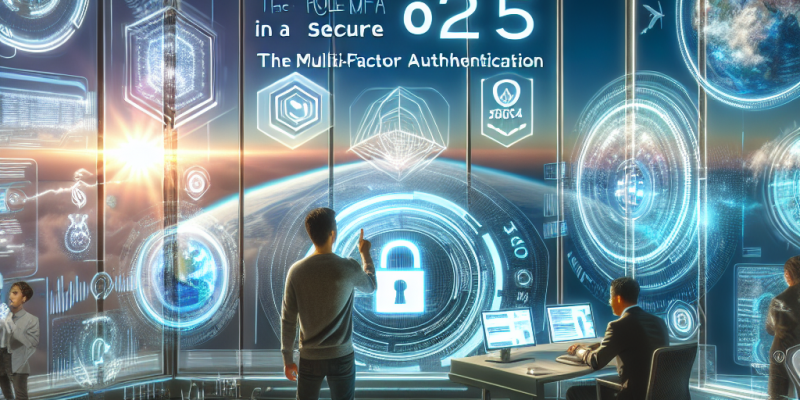Beyond Passwords: The Role of MFA in a Secure 2025

As we move further into 2025, the way we think about online security has transformed dramatically. Cyber threats continue to evolve, making it essential to find stronger ways to protect our personal and business information. Passwords, which have long been the main security measure, are proving less effective. This is where Multi-Factor Authentication (MFA) steps in as a key player in ensuring a secure digital environment.
The Weakness of Passwords
Passwords have been around for a long time, and many of us still rely heavily on them. However, research shows that weak or reused passwords are often the cause of data breaches. In fact, over 80% of hacking incidents involve stolen or weak passwords. Despite the warnings, many users still opt for simple passwords that are easy to remember but also easy for hackers to guess. This makes the case for employing more robust security measures than passwords alone.
What is Multi-Factor Authentication?
Multi-Factor Authentication, or MFA, adds extra layers of security to the login process. Instead of relying solely on a password, MFA requires users to provide two or more verification factors before they can access their accounts. These factors can include:
- Something you know: Like a password or a PIN.
- Something you have: Such as a smartphone, security token, or an authentication app.
- Something you are: Biometric data like fingerprints or facial recognition.
With MFA, even if a password is compromised, unauthorized users would still find it challenging to access the account without the additional factors.
Why MFA is Essential in 2025
Higher Security Standards
As technology evolves, so do the techniques used by cybercriminals. In 2025, more organizations are expected to adopt MFA as part of their standard security protocols. This is not only to comply with stricter regulations but also to build trust with customers. Many users are now expecting companies to offer secure methods for protecting their data.
Remote Work Culture
The rise of remote work has also contributed to the need for MFA. Employees accessing sensitive company data from various locations create multiple entry points for cyber threats. MFA provides an effective solution by ensuring that only authorized personnel can access these systems, regardless of their location.
Increased Use of Mobile Devices
With more people using smartphones and tablets for business transactions, MFA becomes even more crucial. Mobile MFA apps can send one-time codes directly to users’ devices, making it harder for hackers to gain access, as they would need both the user’s password and their device.
The Future: Looking Ahead
As we look towards the future, MFA is expected to become even more sophisticated. Technologies like artificial intelligence and machine learning are paving the way for even smarter authentication methods. For example, AI could analyze user behavior patterns, automatically detecting anomalies that might indicate a security threat.
In addition, passwordless solutions are likely to gain traction. These solutions can offer seamless experiences while maintaining high-security standards, allowing users to log in using biometric data or hardware tokens instead of traditional passwords.
Conclusion
As we navigate through 2025, it is clear that relying solely on passwords is not enough to ensure online security. Multi-Factor Authentication serves as a vital tool in the fight against cybercrime. By requiring multiple forms of verification, MFA not only protects individual users but also fortifies businesses against potential breaches. As we move forward in a tech-driven world, it is essential to embrace these advancements and prioritize security to create a safer online environment for everyone.














